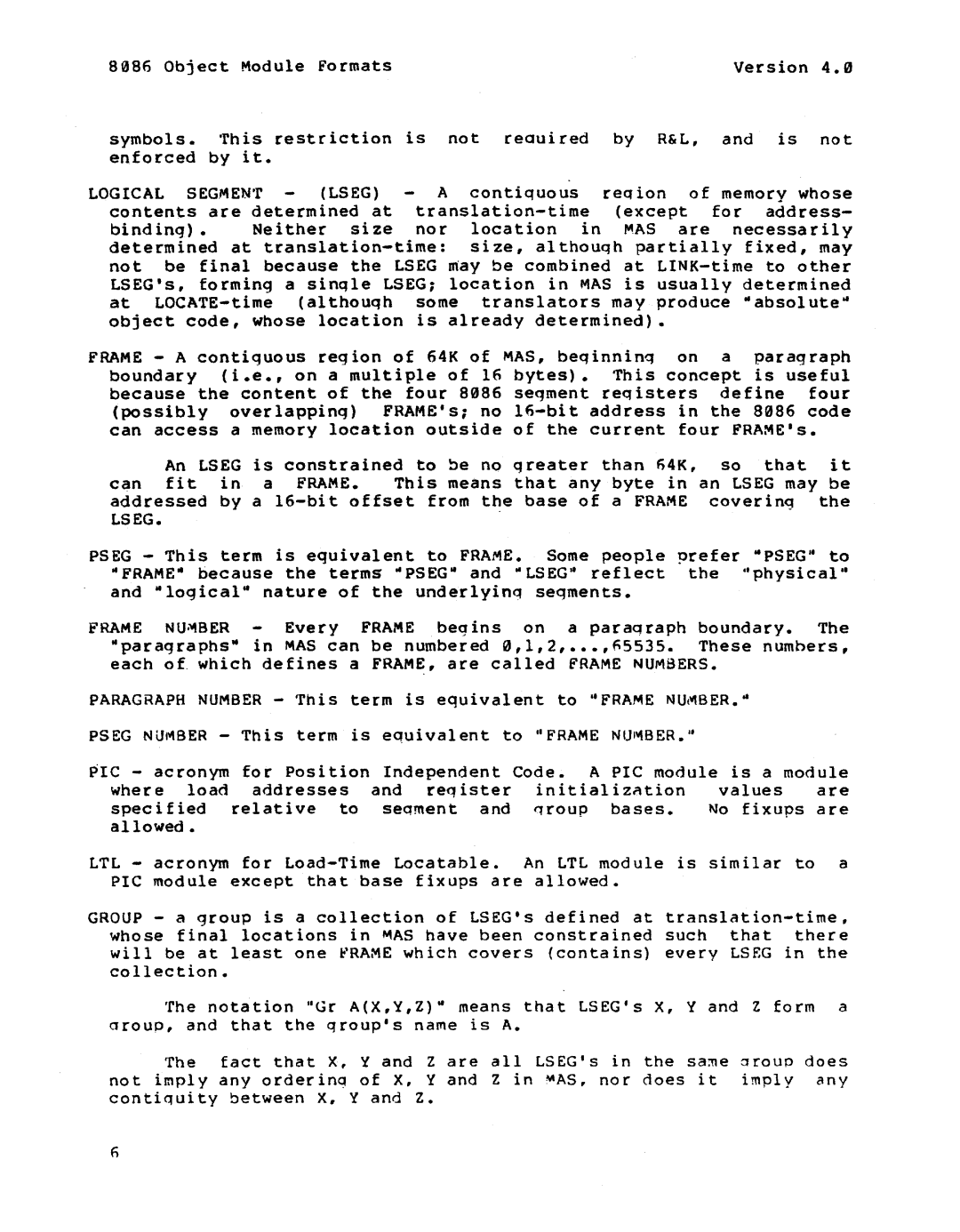
8086 Object Module Formats | Version 4.0 |
symbols. This restriction is not reauired by R&L, and is not enforced by it .
LOGICAL SEGMENT (LSEG) A contiquous reqion of memory whose
contents are determined at
binding) • Neither size nor location in MAS are necessarily determined at
at
FRAME - A contiguous region of 64K of MAS, beqinninq on a paragraph boundary (i . e . , on a multiple of 16 bytes). This concept is useful because the content of the four 8086 seqment reqisters define four
(possibly overlappinq) FRAME's; no
An LSEG is constrained to be no qreater than fi4K, so that it
can fit in a FRAME. This means that any byte in an LSEG may be addressed by a
PSEG - This term is equivalent to FRAME. Some people ~refer MPSEG~ to MFRAME· because the terms MPSEG M and MLSEG d reflect the ~physicaln and Mlogical M nature of the underlyinq seqments.
FRAME NU~BER Every FRAME beqins on a paraqraph boundary. The Mparaqraphs· in MAS can be numbered 0,l,2, ••• ,~5535. These numhers, each of which defines a FRAME. are called FRAME NUMBERS.
PARAGRAPH NUMBER - This term is equivalent to "FRA,,.,E NUl'JfBER."
PSEG NU~BER - This term is equivalent to "FRAME NU~BER.~
PIC - acronym for Position Independent Code. A PIC module is a module
where load addresses and reqister initialization values are
specified relative to seqment and qroup bases. No fixups are allowed.
LTL - acronym for
GROUP - a group is a collection of LSEG's defined at
The notation ~Gr A(X,y,Z)d means that LSEG's X, Y and Z form a arouo, and that the qroup's name is A.
The fact that X, Y and Z are all LSEG's in the same ~roup does not imply any orderinq of X, Y and Z in MAS, nor does it imply any contiquity between X, Y and Z.
